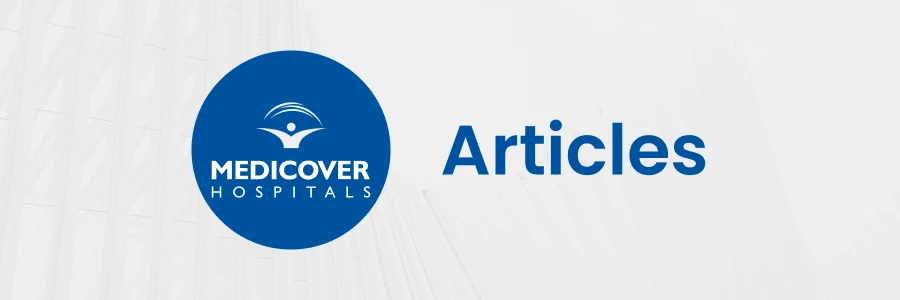Categories
- Cardiology 84
- Dermatology 45
- Endocrinology 33
- ENT 16
- Fertility 190
- Gastroenterology 78
- General-Medicine 81
- Gynecology 80
- Hematology 19
- Infectious-Diseases 33
- Neurology 52
- Oncology 34
- Ophthalmology 23
- Orthopedics 69
- Pediatrics 31
- Procedure 23
- Public-Health 144
- Pulmonology 59
- Radiology 8
- Urology 68
- Wellness 161
- Woman-and-child 77

What is Gallbladder Pain?
Gallstones are hardened deposits of digestive fluid in the gallbladder. The gallbladder is a small, pear-shaped organ located on the right side of the abdomen, just beneath the liver. The gallbladder stores bile, a digestive fluid that is released into the small intestine.
- Gallstones can be as small as a grain of sand or as large as a golf ball in size.
- Some people develop one gallstone at a time, while others develop several gallstones at the same time.
- Gallstones that cause symptoms usually necessitate gallbladder removal surgery.
- Gallstones that do not cause any symptoms usually do not require treatment.
What are the Causes of Gallbladder Pain
The major gallbladder problems that produce gallbladder pain are:
- Biliary colic
- Cholecystitis
- Gallstones
- Pancreatitis
- Ascending cholangitis
Secure your health with a second opinion. Make informed decisions and book your appointment today!
Get A Second OpinionTwo Major Sources of Gallbladder Pain
- Pain originating from or involving the gallbladder.
- Blockage of ducts by gallstones.
1. Pain Originating from Gallbladder
- Gallstone sludge or inflammation causing irritation or infection
- Partial or complete duct obstruction leading to pressure and ischemia in adjacent tissues
2. Blockage of Ducts by Gallstones
- Usually, in the gallbladder, it can form in ducts.
- Compressed gallbladder normally allows bile to flow through ducts into the GI tract.
What Are the Symptoms of Gallbladder Pain?
Gallbladder pain may vary or feel different depending on the cause. Many people with gallstones never experience pain. However, some variations in gallbladder pain help the doctor to make a diagnosis.
Biliary Colic
- It occurs when there is Sudden and rapidly increasing pain (ache or pressure) in the right upper abdomen or epigastric area.
- Some people will have pain radiating to the right shoulder (or back pain in the tip of the scapula) and/or also develop nausea and vomiting.
- The pain usually gets in about 1 to 5 hours, although a mild ache can also persist.
Cholecystitis
Acalculous Cholecystitis (No Gallstones)
Acalculous Cholecystitis is the complication of other problems such as trauma or burns. Patients have severe symptoms and appear very ill.
Pancreatitis
Gallstones from the gallbladder can block the pancreatic duct and cause pancreatitis (inflammation of the pancreas) with upper abdominal pain that may radiate to the back, tender abdomen, more pain after eating, nausea and vomiting.
Ascending Cholangitis
It can cause fever, abdominal pain, jaundice and even hypotension (low blood pressure), and confusion; it is a medical emergency.
What Are the Treatments for Gallbladder Pain?
If you have no gallbladder pain (even if you have gallstones but never had pain), you need no treatment. Some of the patients who had one or two attacks may elect to avoid treatment. Pain during an acute attack is often treated with morphine.
Medical Treatments Include
- Oral bile salt therapy (50% effective)
- Ursodiol (Actigall, for example)
- Dissolution
- Lithotripsy (shock waves)
Ready to take control of your health journey? Book your appointment now and start your path towards wellness today!
Book an AppointmentWhat Are the Complications of Gallbladder Pain?
The complications of gallbladder pain include discomfort with eating, poor food intake, weight loss, electrolyte abnormalities, consumption of pain medications, and disruption of daily activities.
Complications of Gallbladder Include
- Bile duct blockage
- Serious infections (empyema and gangrene of the gallbladder)
- Pancreatitis
- Peritonitis
- Infrequently cancer
Conclusion
Understanding gallbladder pain is crucial as it can stem from various conditions like gallstones or infections. Treatment options vary from managing symptoms to surgical intervention, ensuring effective care for those affected by this often painful condition.
Frequently Asked Questions
Gallbladder pain is typically characterized by a sharp or dull ache in the upper abdomen, often on the
right side. This pain may radiate to the back or shoulder blades. Other symptoms include nausea,
vomiting, bloating, and discomfort after consuming fatty foods. Seek medical attention if you experience
persistent or severe pain.
Gallbladder pain is typically characterized by a sharp or dull ache in the upper abdomen, often on the right side. This pain may radiate to the back or shoulder blades. Other symptoms include nausea, vomiting, bloating, and discomfort after consuming fatty foods. Seek medical attention if you experience persistent or severe pain.
Gallbladder stones, also known as gallstones, form when there is an imbalance in the substances that make
up bile. Excess cholesterol or bilirubin can lead to the formation of stones, which can cause blockages
in the bile ducts or the gallbladder itself, resulting in pain and other symptoms. Treatment may involve
medication or surgical removal of the gallbladder in severe cases.
Gallbladder stones, also known as gallstones, form when there is an imbalance in the substances that make up bile. Excess cholesterol or bilirubin can lead to the formation of stones, which can cause blockages in the bile ducts or the gallbladder itself, resulting in pain and other symptoms. Treatment may involve medication or surgical removal of the gallbladder in severe cases.
Gallbladder infection, known as cholecystitis, presents with symptoms such as severe abdominal pain,
particularly in the upper right quadrant, fever, nausea, vomiting, and jaundice (yellowing of the skin
and eyes). Prompt medical attention is crucial to manage gallbladder infections and prevent
complications.
Gallbladder infection, known as cholecystitis, presents with symptoms such as severe abdominal pain, particularly in the upper right quadrant, fever, nausea, vomiting, and jaundice (yellowing of the skin and eyes). Prompt medical attention is crucial to manage gallbladder infections and prevent complications.
Gallbladder ache is often experienced as a persistent discomfort or sharp pain in the upper abdomen,
especially after consuming fatty or greasy foods. This discomfort may worsen over time and may be
accompanied by symptoms like indigestion, gas, and bloating. If you have recurrent or severe gallbladder
pain, consult a healthcare professional for an accurate diagnosis and appropriate management.
Gallbladder ache is often experienced as a persistent discomfort or sharp pain in the upper abdomen, especially after consuming fatty or greasy foods. This discomfort may worsen over time and may be accompanied by symptoms like indigestion, gas, and bloating. If you have recurrent or severe gallbladder pain, consult a healthcare professional for an accurate diagnosis and appropriate management.
Treatment for gallbladder pain depends on the underlying cause. Mild cases may be managed with dietary
modifications, such as a low-fat diet and pain relief medications. However, if gallstones or other
conditions are causing significant pain or complications, surgical intervention, such as a
cholecystectomy (removal of the gallbladder), may be necessary.
Treatment for gallbladder pain depends on the underlying cause. Mild cases may be managed with dietary modifications, such as a low-fat diet and pain relief medications. However, if gallstones or other conditions are causing significant pain or complications, surgical intervention, such as a cholecystectomy (removal of the gallbladder), may be necessary.
While mild gallbladder pain can sometimes be alleviated at home with rest, over-the-counter pain
medications, and dietary adjustments, it's essential to seek medical evaluation for persistent or severe
pain. Home remedies should not replace professional medical advice, especially if symptoms worsen or
additional symptoms develop.
While mild gallbladder pain can sometimes be alleviated at home with rest, over-the-counter pain medications, and dietary adjustments, it's essential to seek medical evaluation for persistent or severe pain. Home remedies should not replace professional medical advice, especially if symptoms worsen or additional symptoms develop.

Categories
- Cardiology 84
- Dermatology 45
- Endocrinology 33
- ENT 16
- Fertility 190
- Gastroenterology 78
- General-Medicine 81
- General 6
- Gynecology 80
- Hematology 19
- Infectious-Diseases 33
- Neurology 52
- Oncology 34
- Ophthalmology 23
- Orthopedics 69
- Pediatrics 31
- Procedure 23
- Public-Health 144
- Pulmonology 59
- Radiology 8
- Urology 68
- Wellness 161
- Woman-and-child 77